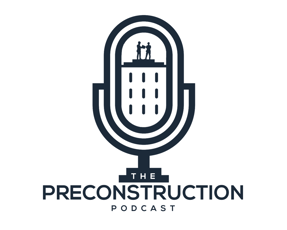The Benefits of Data Sharing in Preconstruction
We work in an environment where there are no commonly used open standards for sharing data between general contractors, subcontractors, and customers. -Ray Chen
In this article, you will learn how data sharing:
- Can prevent cost overruns
- Increases productivity
Okay, so we recognize that we may sound like we repeat the primary precon problems to push our product but, the truth is we were founded by a large design-build firm to solve these preconstruction problems. And though, absolutely yes, we want you to be aware of our preconstruction software solutions, we really do know the pain, risk, and pitfalls of the construction industry.
There’s a reason we keep spinning the broken record—it’s because these pains are felt industry wide. Small, large, local, or global, all estimators struggle with creating the most accurate estimate delivered on time.
Not only do our prospects and clients tell us how difficult it is to obtain the needed information to create a complete estimate, but research confirms it. The Aberdeen Group, a market strategy and research company found that 46% of general contractors report that their second most pressing challenge is the “lack of visibility across multiple platform” Aberdeen Group writes, “Due to lack of visibility, construction firms cannot effectively manage resources, guide projects towards completion, monitor costs, or predict profitability. Many construction firms lack easy access to the information they need to make effective decisions.”
Fortunately, there is a simple solution to this and that is data sharing.
What is Data Sharing?
 Almost half of construction issues arise because of lack of data. (Photo courtesy of Claudio Schwarz.)
Almost half of construction issues arise because of lack of data. (Photo courtesy of Claudio Schwarz.)The term “data sharing” is typically used to reference the collection of our personal data when we use social media, certain websites, email, and other digital forms of communication. But in this case, data sharing simply means passing information back and forth to everyone involved in a project.
When the problem is gaining access to the information you need to make better decisions, data sharing seems intuitive. Yet, as an industry, data sharing isn’t standard.
Besides making money, what is the end goal of a construction project? To deliver (or receive) on time and on budget, safely, right? For any project to go as smoothly as possible, it’s precon’s responsibility to mitigate scope increases, delays, and budget overruns. Though these are not intentional barriers, they certainly are barriers that can be prevented. How, you ask? By getting everyone aligned—and there’s no better way to do that than to share data.
There is one way to loop all involved in a project—precon, designer, stakeholders, subs, owners, and field ops, and that is through technology. Sharing information throughout the life of a project leads to better decisions.
Not only does data sharing help teams make better project decisions, but data sharing can also prevent cost overruns and increase productivity, ultimately, building trust with owners so you can win more work.
How to Prevent Cost Overruns Through Data Sharing
 Technology bridges the gaps in communication between the architect, precon, and owners. (Photo courtesy of Sven Mieke)
Technology bridges the gaps in communication between the architect, precon, and owners. (Photo courtesy of Sven Mieke)Almost all, 9 out of 10 to be exact, construction projects go overbudget. Wouldn’t you like to break the mold and be able to say, “we’re the one percent of general contractors who are on time and on budget all the time?” You can through data sharing.
The Project Management Institute (PMI), a project management professional organization, found that lack of communication causes one third of construction of projects to be delayed or go over budget and has “…a negative impact on project success more than half the time.”
When performing value-engineering, keeping your designers engaged throughout the process keeps your estimates aligned with the scope of work and the owner’s expectations. Technology like DESTINI Estimator construction estimating software that integrates with real-time visual tools like Microsoft Power BI provides a quick and easy way for owners to understand where your numbers come from.
In an article written by Autodesk, Melissa Schulteis, who is a Virtual Construction Specialist at our client Miron Construction, says, “Technology is the glue that holds the project together and creates success by removing data silos and streamlining access to information in a central location.”
When you share your data with all involved, architects can provide insights into your choice of alternative building materials and owners can see how their vision can still be realized when needing to substitute before building even begins.
Voila! Change order averted! All because everyone has access to the same data.
How Data Sharing Increases Productivity
According to research done by Autodesk, 35% of people who work in construction waste 14 hours a week on low-value work like searching for information, correcting errors, and fixing problems. These issues are some of the top reasons why our customers choose DESTINI Estimator. A cost history database, Team Estimating, and eliminating the need for Excel across teams significantly reduces the amount of errors in estimates.
With a system of data sharing in place, these unproductive tasks are eliminated. Schulteis says, “With connected workflows, we can eliminate data loss and broken communication between one entity and the next.”
Multiple offices. Multiple departments. Multiple tools. Our industry is plagued by silos. Data sharing between everyone involved in a project means no one is looking for information, errors are eliminated, and problems are solved quickly and collaboratively.
What Data Sharing is NOT
So, data sharing in construction is not the need to protect your personal information but rather a single source of truth that keeps the project on time and on budget. Project alignment and mitigating risk throughout the preconstruction phase of a project truly is the key to a successful project.

-1.png?width=112&height=112&name=image%20(4)-1.png)















